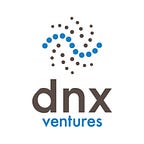SafeGraph: Leveraging Geospatial Data to Improve Top and Bottom Line at the Enterprise Level
Data-driven decision-making has become the default in today’s modern business environment; however, many companies are beginning to realize that the data they have is low quality, inaccurate, or irrelevant. In the physical world, location has a significant impact on business, and location data can provide key insights across sectors. While extensively leveraged in Retail and Real Estate for making decisions in site selection, location data can also provide insights for various business activities from location-based ads in Marketing to insurance in Financial Services.
DNX Ventures has an extensive Corporate Network and regularly hosts events to provide Fortune 500 enterprises a window to the latest technology trends, and also provide an opportunity to our portfolio companies to showcase related innovations and products. We recently hosted a webinar “Leveraging Geospatial Data to Improve Top and Bottom Line at the Enterprise Level,” specifically focused on this current topic of location data. We had Nathan Uhlenbrock, former Junior Partner from the Geospatial Advanced Analytics Practice at McKinsey and Company as a keynote speaker, and Jason Cook, VP Sales and Customer Success at SafeGraph, to introduce its products. The event was attended by Fortune 500 enterprises across various industries, including Real Estate, Finance, Retail, Software, and Transportation.
We began with a discussion led by Nathan Uhlenbrock on macro trends and the major ways in which location data is improving decision-making on the enterprise level. Location data can answer key questions about consumers, competitors, and strategy using a combination of descriptive, diagnostic, predictive, and prescriptive analytics. In the retail sector, these analytics can cover questions from where to locate a store to maximize sales, what goes in the store, and how the addition of brick-and-mortar will affect e-commerce sales. Across industries, accurate and timely data drives great business questions and provides the insights, necessary situational awareness, and context to make sound strategy and decisions.
To maximize the benefits of location data, enterprises should begin by looking within and ensuring they are not missing any opportunities to capture their own data. However, to operate effectively, enterprises must also use third-party data as a resource. Data alone does not solve problems, but good data combined with analytics strategies do.
Next, Jason Cook from our portfolio company SafeGraph revealed a major issue with the current state of location data as 59% of it is inaccurate. Companies often waste valuable time on cleaning and standardizing their data and that could instead go towards creative efforts and decision making. SafeGraph, a third-party data vendor, recognized the gap between the widespread understanding of the importance of the physical world and the lack of quality data available about it. For many businesses, data is often a secondary or tertiary source of revenue. SafeGraph is different. SafeGraph views itself as a mere ingredient for their customers and derives 100 percent of its revenues from data. In providing customers with an unobstructed cut of data, SafeGraph does not spend time and money on the over-beautification(or visualization) of data (which hinders repeatability). This way, customers have the ability to validate their data based on their business needs and apply it to their unique environment.
Location data has numerous uses, and it can also serve as the foundation for additional analysis. Many businesses already have information about their own ecosystem and locations. However, much of the risks and benefits of a location come from what surrounds it and SafeGraph data can bridge this gap. High-quality datasets provide information about the whole business, not just the building, with insights spanning from foot traffic, making site selections, market analysis, and customer behavior modeling. By taking location data to the next level, SafeGraph enables businesses to now use it to understand performance, competitors, expansion opportunities, and ultimately to develop sound business strategies.
SafeGraph licenses its data on an annual subscription basis, enabling it to be frequently refreshed, working across all business sizes from startup to Fortune 500. Recently, SafeGraph launched in the UK and is working to launch in 15 additional countries with the goal of creating a globalized dataset. To learn more about geospatial data and SafeGraph, visit safegraph.com, watch the event recording here or contact Jason Cook, VP Sales and Customer Success at SafeGraph jason@safegraph.com. Finally, we at DNX Ventures would like to thank everyone who took the time to attend the event and make it such a success. It will be exciting to see the innovative applications of location data in the coming future.
